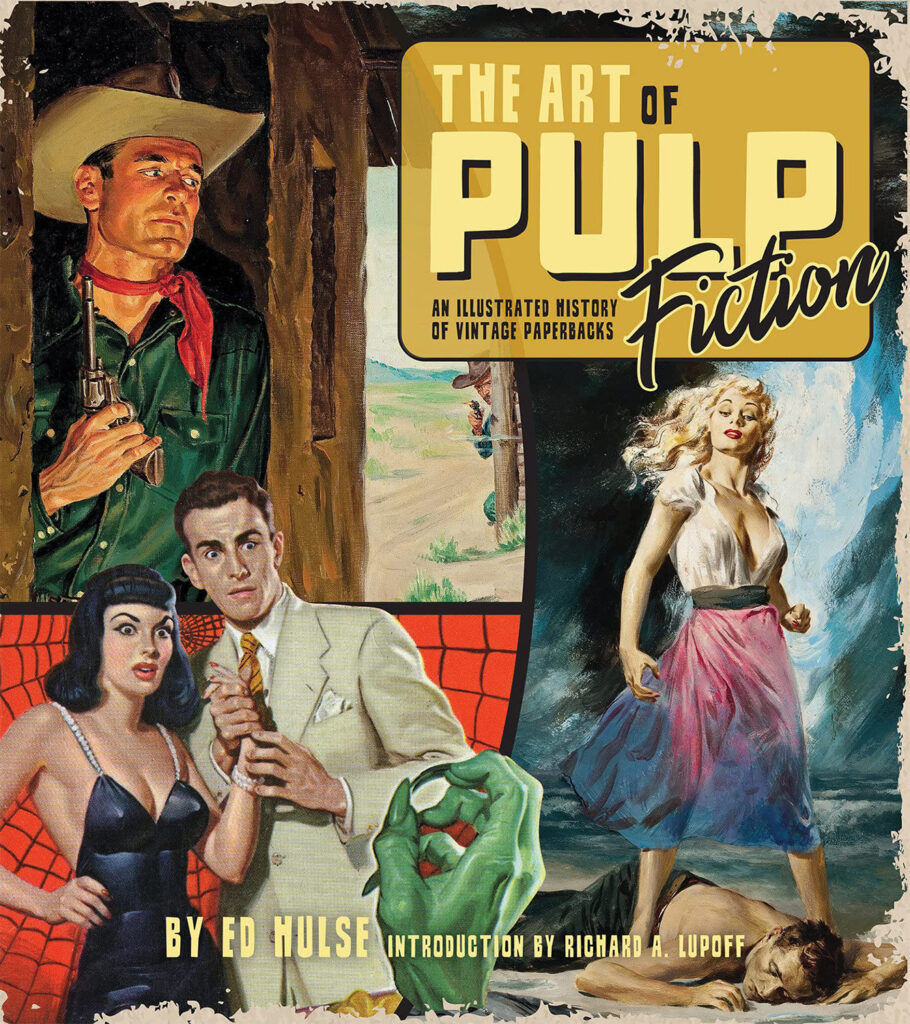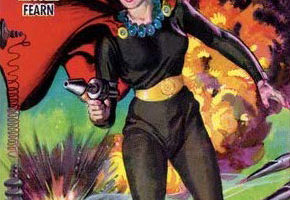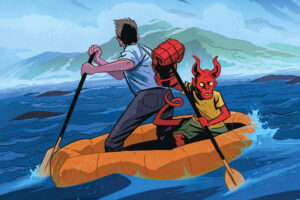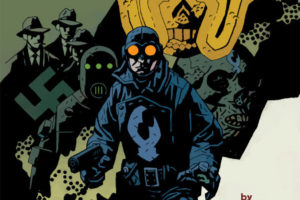 A sort-of follow-up recently came from IDW, this time edited only by Ed Hulse: The Art of Pulp Fiction: An Illustrated History of Vintage Paperbacks. And sadly, if you pay attention to the title, it’s really not about pulp fiction, but on paperbacks — which are not pulp.
A sort-of follow-up recently came from IDW, this time edited only by Ed Hulse: The Art of Pulp Fiction: An Illustrated History of Vintage Paperbacks. And sadly, if you pay attention to the title, it’s really not about pulp fiction, but on paperbacks — which are not pulp.
But this is not Ed’s fault. The title was chosen by the publisher. There are sections on pulp reprints in the paperbacks, including the pulp heroes, so this is definitely worth getting for the pulp fan. And there is lots of artwork reproduced. Ed wrote most of this, but also has contributions from Will Murray, Gary Lovisi, and David Saunders, all authorities in this area.
Coming in at around 230 pages, it contains 12 chapters, each focused on a different area of paperbacks. The focus seems to be paperbacks in the 1950s, ’60s, and ’70s.
Things kick off with an intro from Richard A. Lupoff, who goes over the transition of popular fiction from the pulps to the paperbacks as the pulps died off at the end of the 1940s. While a few struggled on, they were largely dead by that time, or converted to digest magazines.
The first chapter, “In the Beginning,” chronicles the emergence of the paperbacks from dime novels, proto paperbacks in the teens and ’20s to the establishment of Pocket Books in 1939 under Simon & Schuster, considered the first mass-market, pocket-sized paperback books. They still exist today using the kangaroo logo. There were others before, such as Garden City Publishing in the 1920s, part of Doubleday, which reprinted works from Short Stories, including the covers. Short Stories was owned by Doubleday at the time.
The second chapter shows the many publishers, some of them who also published pulp magazines, that got into the paperback field. This is how many of them continued as publishers as they dropped their pulps: Avon, Popular Library (Thrilling/Standard), Dell, Signet, Penguin, Gold Medal Book (Fawcett), and so on. Many pulp-cover artists soon started to produce covers for the paperback-book market as well.
The next chapter gets into detective paperbacks, such as Perry Mason, The Saint, etc., and the still popular Dell “mapbacks.” Then we get a chapter on westerns, and then adventurers. This is everything from James Bond to pirates to Fu Manchu to South Seas, and everything in between.
Chapter six is science fiction. As a young science-fiction fan, I recall several of these works as ones I read, usually in later editions, or ones I came across in used bookstores. The next chapter is fantasy and horror, which I see as somewhat of an extension of sf. It’s nice they included the three covers from the early unauthorized edition of J.R.R. Tolkien‘s Lord of the Rings trilogy.
Chapter eight covers what I’d call the “juvenile delinquent” genre of paperbacks of the time.
The pulp-hero revival in paperbacks is the subject of the next chapter, and it’s one of my favorites. We get covers of Edgar Rice Burroughs works, but also The Avenger, the Corinth/Regency reprints (The Phantom Detective, Secret Agent X, Operator #5, etc), Doc Savage, the various Spider reprints. We actually get two pencil roughs for two of the Pocket Book’s reprints of The Spider from the ’70s, which I’ve never seen before. And some of Jim Steranko‘s covers for The Shadow and G-8. And finally, there’s Conan, including the classic Frank Frazetta cover.
The next chapter is on the “sleaze paperbacks.” I’ve always had an issue with these, of all the paperbacks. These are what some people try to slap the label of “pulp” on, and then try to claim that “pulp” mainly means lurid fiction. These paperbacks are not pulp, nor does this sort of fiction comprise a large percentage of actual pulp fiction.
The final two chapters get into the writers of the paperbacks, and then to the artists, giving us their insight into these areas. And things get wrapped up with an afterword on the paperbacks since the ’70s.
As someone who has haunted used bookstores looking for items to fill the gaps in my collection, I’ve seen how paperback cover artwork hasn’t gotten better since those earlier years. Overdone typography, minimalized artwork, photographs, and whatever the heck passes for most cover artwork today is a massive step backward.
This is an excellent work and will go on my shelves next to the prior work and with my other volumes on pulp artwork, to be pulled down and enjoyed. This is another winner.
With the recent works on various pulp-cover artists, as well as model Steve Holland, there are several areas I wish someone would look into. I would love to see a more extensive look at all the cover artwork done for the pulp-hero revival, including Doc Savage, The Avenger, The Shadow, The Spider, G-8, all the Corinth/Regency works, etc. We get bits and pieces, and there are probably overlooked areas.
In the meantime, grab this one if you have the chance.



